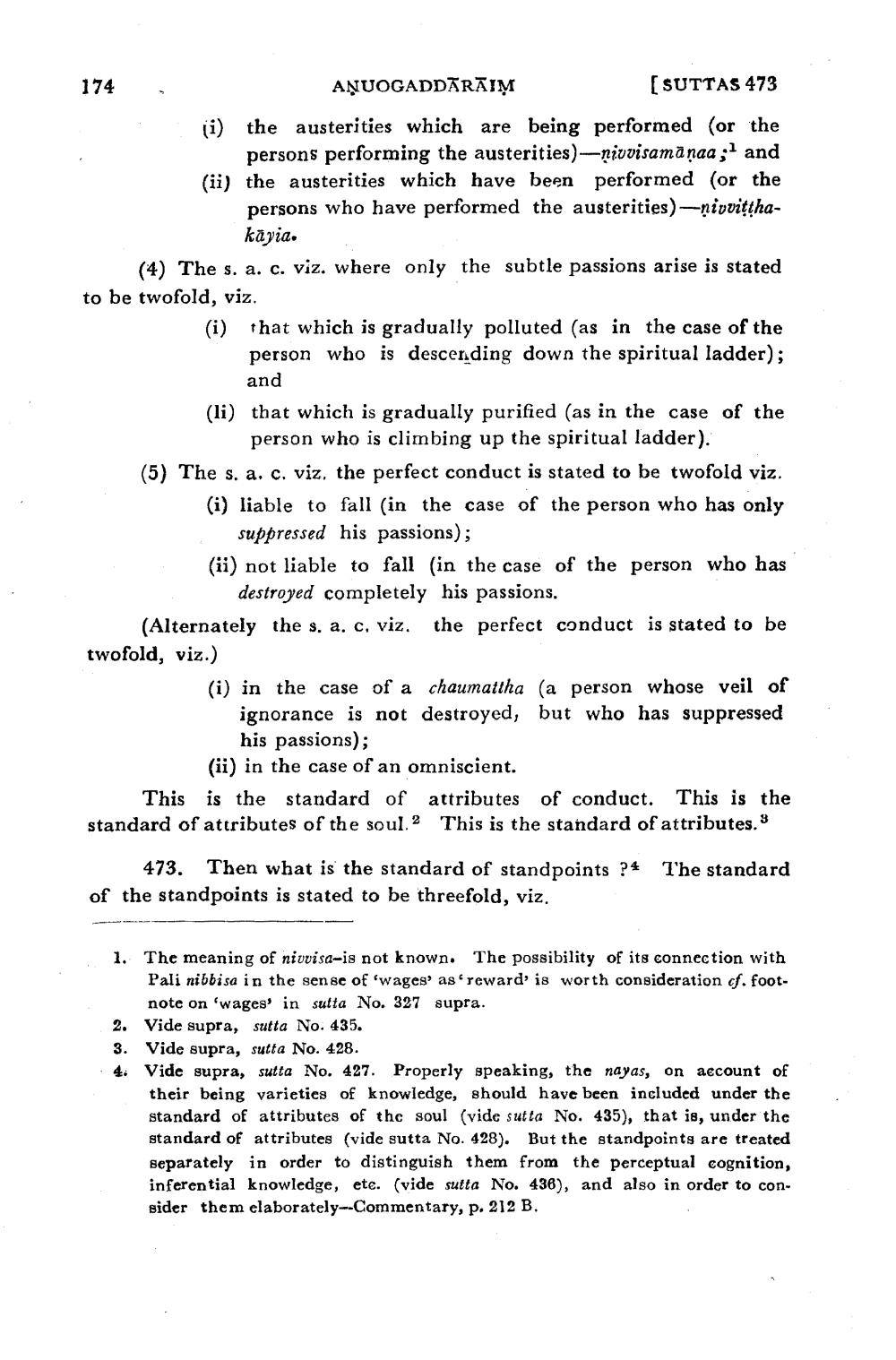________________
174
AŅUOGADDĀRĀIM
(SUTTAS 473 (i) the austerities which are being performed (or the
persons performing the austerities)-nivvisamānaa; 1 and (ii) the austerities which have been performed (or the
persons who have performed the austerities)-nivvittha
kayia. (4) The s. a. c. viz. where only the subtle passions arise is stated to be twofold, viz.
(i) that which is gradually polluted (as in the case of the
person who is descending down the spiritual ladder);
and (li) that which is gradually purified (as in the case of the
person who is climbing up the spiritual ladder). (5) The s. a. c. viz. the perfect conduct is stated to be twofold viz.
(i) liable to fall in the case of the person who has only
suppressed his passions); (ii) not liable to fall in the case of the person who has
destroyed completely his passions. (Alternately the s. a. c, viz. the perfect conduct is stated to be twofold, viz.)
(i) in the case of a chaumattha (a person whose veil of
ignorance is not destroyed, but who has suppressed
his passions);
(ii) in the case of an omniscient. This is the standard of attributes of conduct. This is the standard of attributes of the soul.2 This is the standard of attributes.
The standard
473. Then what is the standard of standpoints ?4 of the standpoints is stated to be threefold, viz.
1. The meaning of nivvisa-is not known. The possibility of its connection with
Pali nibbisa in the sense of 'wages' as reward' is worth consideration of. foot
note on 'wages' in sulta No. 327 supra. 2. Vide supra, sutta No. 435. 3. Vide supra, sutta No. 428. 4. Vide supra, sutta No. 427. Properly speaking, the nayas, on account of
their being varieties of knowledge, should have been included under the standard of attributes of the soul (vide sutta No. 435), that is, under the standard of attributes (vide sutta No. 428). But the standpoints are treated separately in order to distinguish them from the perceptual cognition, inferential knowledge, etc. (vide sutta No. 436), and also in order to consider them elaborately--Commentary, p. 212 B.




